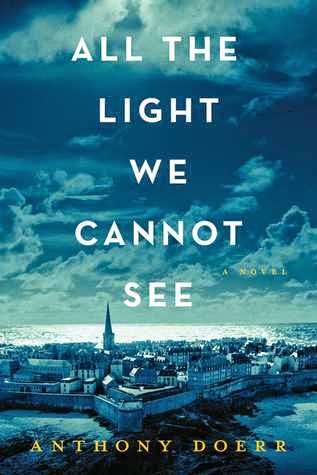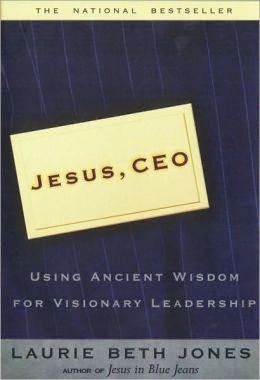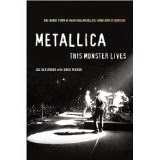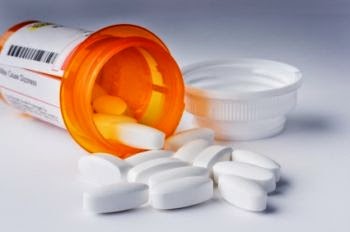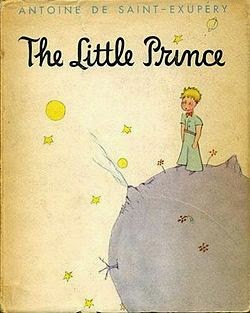I was just catching up on my weekly news magazines today and caught this stat about prescription addiction: 46 people die
each day from overdoses of prescription opioids, like Percocet, Vicodin and Oxycontin. Up to 90% of those with chronic pain are prescribed an opioid, and up to 25% become addicted. Some people in our bleeding disorder community suffer from chronic pain, especially those with inhibitors and chronic joint damage. I thought it would be good to run this excellent article published in my latest edition of PEN by Paul Clement, our science writer, in our column Inhibitor Insights, sponsored by Novo Nordisk.
How to Use Pain Meds Safely by Paul Clement
Pain is no stranger to people with hemophilia: joint bleeds are painful, and repeated
bleeds into a joint cause damage to cartilage, resulting in a painful form of
arthritis called hemophilic arthropathy. A trip to your medicine cabinet
usually yields some form of painkiller (analgesic) to get you through the worst
of the pain. But when you have inhibitors, you may need something stronger for prolonged
bleeds or chronic arthropathy.
Most people don’t think twice about taking analgesics. But these meds can potentially kill:
every year, many people overdose accidentally. People with inhibitors frequently
need painkillers and may be at higher risk of serious side effects. When was
the last time you thoroughly read the package insert on your pain med? What do
you need to know to be safe when taking pain meds?
Two Types of Pain
Pain is either acute or chronic. Acute pain lasts hours or days. Chronic pain lasts six months or longer. Acute pain is considered necessary, even beneficial—alerting our bodies to danger or injury, and prompting us to protect ourselves or get treatment. But chronic pain is a disease state in itself, and is often destructive and debilitating, harming our general well-being.
If you have hemophilia, your acute pain is usually caused by bleeding that leads to swelling in joints and muscles. Chronic pain, by contrast, is usually caused by arthritis in joints, a result of repeated bleeds that have damaged the joint’s cartilage—a common problem for many people with inhibitors. The two types of pain require different treatment approaches and different pain meds.
Proper treatment of pain depends on the type you have. Pain meds are divided into two broad groups: opioid and non-opioid. Mild acute pain—like a headache—is often treated by non-opioid over-the-counter (OTC) pain meds, available without a doctor’s prescription. There are two basic
types of OTC pain relievers: (1) acetaminophen and (2) a broad class of drugs called non-steroidal anti-inflammatory drugs (NSAIDs), such as naproxen and ibuprofen.1
Opioids, such as morphine and oxycodone, are available only with a prescription. These meds are used to treat moderate-to-severe acute pain and chronic pain.
When used as directed, pain meds are usually safe and effective. But when misused, all pain meds can be dangerous and even deadly. Most drug overdoses are not intentional, but are caused by ignorance. People don’t read product inserts carefully, or they combine multiple drugs, not realizing that this could result in an overdose or make their normally safe medication toxic. Also, many people believe that because OTC drugs are available without a prescription, they must be safe and can be taken without harm. Not true! In fact, OTC pain meds are powerful drugs that can be deadly, and they should be used with caution.
What do you need to know about pain meds to keep yourself or your child safe? In the first of this two-part series, we’ll look at the risks of acetaminophen, the most commonly recommended pain med for people with hemophilia.
Acetaminophen
For hemophilia, acetaminophen (Tylenol®, Excedrin®, Anacin®) is the most often recommended drug for mild to mild–moderate
pain because it’s generally effective, and it doesn’t affect the blood’s clotting ability, like almost all NSAIDs do. Acetaminophen reduces pain and
fever and won’t cause gastrointestinal bleeding, as NSAIDs can. But acetaminophen has no anti-inflammatory properties, as NSAIDs do, to help reduce swelling in joints and muscles.
When taken as directed, acetaminophen is generally safe. Over 50 million Americans use acetaminophen weekly, but it can cause liver damage. Don’t take a higher dose than is recommended. Don’t take acetaminophen for more than ten days or while drinking alcohol.
Acetaminophen overdose is the leading cause of calls to US poison control centers—more than 100,000 instances annually. Every year, acetaminophen overdose is responsible for more than 56,000 emergency room visits; 26,000 hospitalizations; and an estimated 458 deaths due to acute liver failure.2 In fact, acetaminophen is the number one cause of acute liver failure—placing it above viral hepatitis as a cause.
About half of acetaminophen overdoses are intentional, as in suicide. The other half are unintentional. Unintentional overdose often occurs because people are either unaware that acetaminophen can be dangerous, or they mix drugs. Even if you’re aware of the dangers of acetaminophen, you may not know what’s in the other drugs you’re taking at the same time. Acetaminophen is found in over 600 drugs,
including many cold medications, and this may not be prominent on the label. Consumers may also be led astray by a label’s wording: sometimes acetaminophen is abbreviated “acet” or “acetamin,” or is listed in the ingredients not by its common name but by the abbreviation of its chemical name: APAP.3 If you’re traveling abroad, know that in countries outside the US, Canada, and Japan, acetaminophen is called paracetamol.
Overdosing
Unfortunately, overdosing on acetaminophen is easy—there isn’t much difference between the maximum recommended dose and a potentially dangerous dose that is toxic to the liver. FDA guidelines limit the daily maximum dose of acetaminophen to 4.0 grams (g), or 4,000 milligrams (mg). (1 g equals 1,000 mg.) But for some people, even taking acetaminophen at below the FDA recommended maximum dose may be dangerous—a small percentage of people who take acetaminophen can’t efficiently metabolize (break down) the drug, and they suffer liver damage even
though they are taking less than the recommended maximum daily amount.
In 2011, McNeil Consumer Healthcare (a Johnson & Johnson company, the manufacturer of Tylenol and largest seller of acetaminophen) voluntarily lowered its recommended maximum daily dose from 4.0 g to 3.0 g, that is, from eight extra-strength (500 mg) tablets to six extra-strength tablets daily.
People may unintentionally overdose on acetaminophen by taking more than one drug containing acetaminophen. Suppose you’re taking extra-strength Tylenol (500 mg) for a joint bleed, and then on top of that, you take NyQuil® Nighttime Relief (containing 650 mg of acetaminophen) to get some sleep because you also have a cold. This combination of meds (1,150 mg of acetominophen) may push you over the 4.0 g daily limit.
It’s also easy to overdose on acetaminophen by taking repeated doses that are only slightly over the recommended maximum dose. Some people fall into the trap of thinking that more is better, and knowingly take a little more than the recommended dose—because it’s “close enough” not to cause problems, right? This is dangerous thinking! Taking multiple small overdoses, called staggered overdosing, is often more life-threatening than taking a single, large dose. Why? It’s harder for physicians to detect staggered overdosing because blood acetaminophen levels are low (as opposed to a single large dose, which is easily detected); and often, people often don’t go to a hospital for help until after the damage is done.
Why would anyone not go to a hospital for acetaminophen overdose? Often, because they don’t know they have overdosed! An overdose of acetaminophen doesn’t typically produce immediate symptoms, and when symptoms do appear, they often mimic those of the flu—often, the reason people are taking acetaminophen in the first place.
Symptoms of drug-induced liver damage, which may not show for several days or more, include loss of appetite, nausea, vomiting, fever, and abdominal pain. In more serious cases, urine may be dark (indicating blood in the urine), and the skin and eyes may be tinged yellow (called jaundice, an indication that the liver is not effectively removing the breakdown products of red blood cells). Usually, if the damage is not severe and caught early, the liver recovers once the drug is stopped or with medical treatment. But if the damage is severe, the liver will stop functioning effectively. This is acute liver failure, and without a transplant, it will cause death. .
How to Make Sure You Take Acetaminophen Safely
1. Always read the package insert! If the product you’re taking contains acetaminophen, check the package insert for correct dosing.
2. More is not better! Take the lowest possible dose of acetaminophen you need to control your pain.
3. Don’t take more than one product at a time that contains acetaminophen! And never drink alcohol when taking medicines that contain acetaminophen.4
Here are more ways to stay safe:
Keep your daily acetaminophen dose below 3,000 mg (3 g). That’s six extra-strength 500 mg pills, or ten regular-strength 325 mg pills. (This is less than the FDA recommendations.
Do not take acetaminophen for more than ten days unless you are under a doctor’s supervision; this increases your risk of liver damage.
If you have viral hepatitis, ask your doctor before using acetaminophen; you may. be at higher risk of drug-induced liver damage due to previous liver damage.
Consult your doctor if you take carbamazepine (anti-seizure medication) before taking acetaminophen. This drug can put you at higher risk of severe skin reactions to acetaminophen.
Be aware of these rare but serious and potentially fatal skin reactions caused by acetaminophen: Stevens-Johnson Syndrome (SJS), toxic epidermal necrolysis (TEN), and acute generalized exanthematous pustulosis (AGEP). If you develop a skin rash or reaction while using acetaminophen, stop taking the drug and seek medical attention immediately.
If you use warfarin (blood thinner, brand name Coumadin®), ask your doctor before taking acetaminophen, which interacts with warfarin, increasing
bleeding time.
If your child uses acetaminophen:
Never give your child adult doses.
Dose children based on weight, not age. McNeil Consumer Healthcare recommends consulting a physician before giving Tylenol to children under age two.
To measure liquid acetaminophen for a child, use the measuring device that comes with the child’s medication. Don’t use household teaspoons, which can vary widely in size.
Keep all pain medications out of reach of children, and securely replace childproof caps.
In case of overdose, contact the Poison Control Center: (800) 222-1222
1. High-dose NSAIDs for moderate acute pain are available by doctor’s prescription.
2. In a 2013 telephone poll of approximately 1,000 adults conducted by Princeton Survey
Research Associates International, 51% of respondents were unaware of any safety warnings associated with
Tylenol. The poll also found that many Americans also believed it was safe to
take several different meds containing acetaminophen at once. For example, 35%
of respondents said it was safe to combine the maximum recommended dose of extra-strength
Tylenol with NyQuil®, a cold remedy that also contains
acetaminophen. According to the FDA, this is not safe.
3. Fortunately, this is now uncommon. With greater awareness of the potential of liver damage from acetaminophen, most
drug manufacturers now prominently list acetaminophen in the active ingredients of the drug facts panel of their products, often in bold type with highlighting in bright yellow.
4. More than three alcoholic drinks a day significantly increases your risk of liver damage by decreasing the ability of your liver to properly metabolize
acetaminophen.

